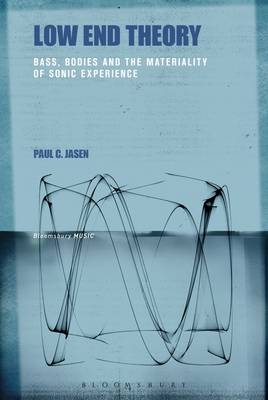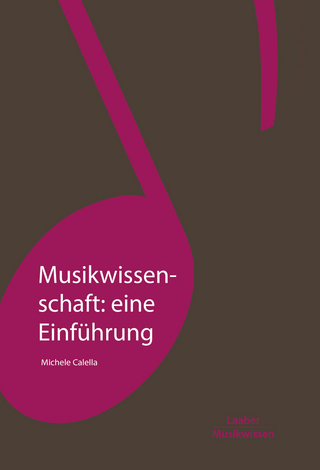
Low End Theory
Bloomsbury Academic USA (Verlag)
978-1-5013-3591-4 (ISBN)
The guiding question is not so much what we make of bass, but what it makes of us: how does it undulate and unsettle; how does it incite; how does it draw bodily thought into new equations with itself and its surroundings? Low End Theory is the first book to survey this sonorous terrain and devise a conceptual language proper to it. With its focus on sound’s structuring agency and the multi-sensory aspects of sonic experience, it stands to make a transformative contribution to the study of music and sound, while pushing scholarship on affect, materiality, and the senses into fertile new territory. Through energetic and creative prose, Low End Theory works to put thought in touch with the vibratory encounter as no scholarly book has done before.
For more information, visit: http://www.lowendtheorybook.com/
Paul C. Jasen is a Lecturer in Music and Communication Studies at Carleton University, Canada.
Acknowledgments
Introduction: Elements of a Myth-Science
1. The Sonic Body: An Ethico-Acoustic Toolkit
Sonorous Relations
Tales and Strategies
Myth-Science in the Vibratory Milieu
2. Spectral Catalysis: Disquieting Encounters
Spectres of the Manmade Unknown
Infrasound
Unhomed
Boo! (toward an operative reality)
The Hum
‘And it was only by analogy that it could be called a sound at all...’
Blinkered Science
We still do not know what a sonic body can do...
3. Numinous Strategies
Learning to Play the Sonic Body
The Nervous Piano
Numinous Instruments
Religious Audiogenesis
Numinous Sound Design
Playing the Resonances
Tellurian Organs
The Organ-Church Assemblage
The Arcanum: An Ambulant Myth-Science
The Nervous Organ
Baroque Affect Engineering
The Gothic Assemblage: Applied Synaesthetics
4. Tone Scientists I: Vibratory Arts
Cymatic Arts
Documentary Practices
A Speculative Turn
Perceptual Abstraction
Transversal Strategies
Incipient Dance
Sonic Architectures
Dance With the Speaker
‘A people of oscillators’
5. Tone Scientists II: Bass Cults
The Lab
The Science
Bass Science
Dubplates and Mastering
Engineering the Vibratorium
Affects and Affectations
Entering the Rhythmachine
Three Physio-Logics
Jungle (1994)
Dubstep (2005)
Footwork (2009)
Conclusion: Where next?
Endnotes
Bibliography
Index
| Erscheinungsdatum | 31.01.2018 |
|---|---|
| Verlagsort | New York |
| Sprache | englisch |
| Gewicht | 399 g |
| Themenwelt | Kunst / Musik / Theater ► Musik ► Musiktheorie / Musiklehre |
| Sozialwissenschaften | |
| ISBN-10 | 1-5013-3591-X / 150133591X |
| ISBN-13 | 978-1-5013-3591-4 / 9781501335914 |
| Zustand | Neuware |
| Informationen gemäß Produktsicherheitsverordnung (GPSR) | |
| Haben Sie eine Frage zum Produkt? |
aus dem Bereich


